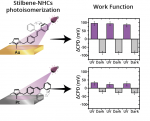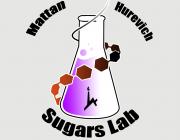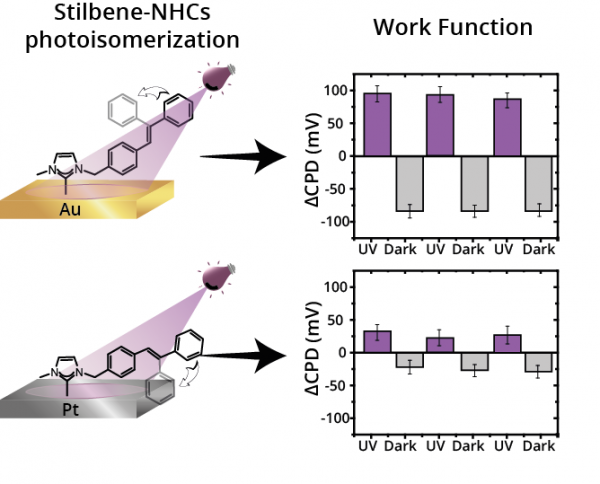Citation:

Abstract:
Self-assembly of photo-responsive molecules is a robust technology for reversibly tuning the properties of functional materials. Herein, we probed the crucial role of surface–adsorbate interactions on the adsorption geometry of stilbene-functionalized N-heterocyclic carbenes (stilbene-NHCs) monolayers and its impact on surface potential. Stilbene-NHCs on Au film accumulated in a vertical orientation that enabled high photoisomerization efficiency and reversible changes in surface potential. Strong metal–adsorbate interactions led to flat-lying adsorption geometry of stilbene-NHCs on Pt film, which quenched the photo-isomerization influence on surface potential. It is identified that photo-induced response can be optimized by positioning the photo-active group in proximity to weakly-interacting surfaces.


